RBS 2010 Annual Report Download - page 201
Download and view the complete annual report
Please find page 201 of the 2010 RBS annual report below. You can navigate through the pages in the report by either clicking on the pages listed below, or by using the keyword search tool below to find specific information within the annual report.-
 1
1 -
 2
2 -
 3
3 -
 4
4 -
 5
5 -
 6
6 -
 7
7 -
 8
8 -
 9
9 -
 10
10 -
 11
11 -
 12
12 -
 13
13 -
 14
14 -
 15
15 -
 16
16 -
 17
17 -
 18
18 -
 19
19 -
 20
20 -
 21
21 -
 22
22 -
 23
23 -
 24
24 -
 25
25 -
 26
26 -
 27
27 -
 28
28 -
 29
29 -
 30
30 -
 31
31 -
 32
32 -
 33
33 -
 34
34 -
 35
35 -
 36
36 -
 37
37 -
 38
38 -
 39
39 -
 40
40 -
 41
41 -
 42
42 -
 43
43 -
 44
44 -
 45
45 -
 46
46 -
 47
47 -
 48
48 -
 49
49 -
 50
50 -
 51
51 -
 52
52 -
 53
53 -
 54
54 -
 55
55 -
 56
56 -
 57
57 -
 58
58 -
 59
59 -
 60
60 -
 61
61 -
 62
62 -
 63
63 -
 64
64 -
 65
65 -
 66
66 -
 67
67 -
 68
68 -
 69
69 -
 70
70 -
 71
71 -
 72
72 -
 73
73 -
 74
74 -
 75
75 -
 76
76 -
 77
77 -
 78
78 -
 79
79 -
 80
80 -
 81
81 -
 82
82 -
 83
83 -
 84
84 -
 85
85 -
 86
86 -
 87
87 -
 88
88 -
 89
89 -
 90
90 -
 91
91 -
 92
92 -
 93
93 -
 94
94 -
 95
95 -
 96
96 -
 97
97 -
 98
98 -
 99
99 -
 100
100 -
 101
101 -
 102
102 -
 103
103 -
 104
104 -
 105
105 -
 106
106 -
 107
107 -
 108
108 -
 109
109 -
 110
110 -
 111
111 -
 112
112 -
 113
113 -
 114
114 -
 115
115 -
 116
116 -
 117
117 -
 118
118 -
 119
119 -
 120
120 -
 121
121 -
 122
122 -
 123
123 -
 124
124 -
 125
125 -
 126
126 -
 127
127 -
 128
128 -
 129
129 -
 130
130 -
 131
131 -
 132
132 -
 133
133 -
 134
134 -
 135
135 -
 136
136 -
 137
137 -
 138
138 -
 139
139 -
 140
140 -
 141
141 -
 142
142 -
 143
143 -
 144
144 -
 145
145 -
 146
146 -
 147
147 -
 148
148 -
 149
149 -
 150
150 -
 151
151 -
 152
152 -
 153
153 -
 154
154 -
 155
155 -
 156
156 -
 157
157 -
 158
158 -
 159
159 -
 160
160 -
 161
161 -
 162
162 -
 163
163 -
 164
164 -
 165
165 -
 166
166 -
 167
167 -
 168
168 -
 169
169 -
 170
170 -
 171
171 -
 172
172 -
 173
173 -
 174
174 -
 175
175 -
 176
176 -
 177
177 -
 178
178 -
 179
179 -
 180
180 -
 181
181 -
 182
182 -
 183
183 -
 184
184 -
 185
185 -
 186
186 -
 187
187 -
 188
188 -
 189
189 -
 190
190 -
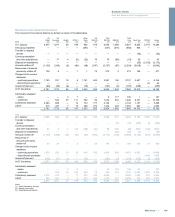 191
191 -
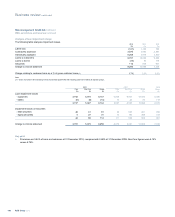 192
192 -
 193
193 -
 194
194 -
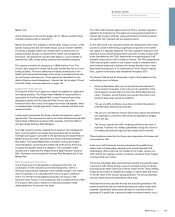 195
195 -
 196
196 -
 197
197 -
 198
198 -
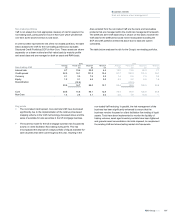 199
199 -
 200
200 -
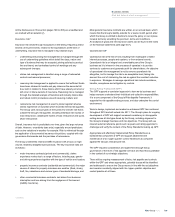 201
201 -
 202
202 -
 203
203 -
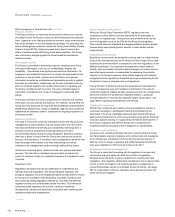 204
204 -
 205
205 -
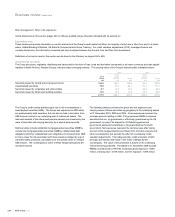 206
206 -
 207
207 -
 208
208 -
 209
209 -
 210
210 -
 211
211 -
 212
212 -
 213
213 -
 214
214 -
 215
215 -
 216
216 -
 217
217 -
 218
218 -
 219
219 -
 220
220 -
 221
221 -
 222
222 -
 223
223 -
 224
224 -
 225
225 -
 226
226 -
 227
227 -
 228
228 -
 229
229 -
 230
230 -
 231
231 -
 232
232 -
 233
233 -
 234
234 -
 235
235 -
 236
236 -
 237
237 -
 238
238 -
 239
239 -
 240
240 -
 241
241 -
 242
242 -
 243
243 -
 244
244 -
 245
245 -
 246
246 -
 247
247 -
 248
248 -
 249
249 -
 250
250 -
 251
251 -
 252
252 -
 253
253 -
 254
254 -
 255
255 -
 256
256 -
 257
257 -
 258
258 -
 259
259 -
 260
260 -
 261
261 -
 262
262 -
 263
263 -
 264
264 -
 265
265 -
 266
266 -
 267
267 -
 268
268 -
 269
269 -
 270
270 -
 271
271 -
 272
272 -
 273
273 -
 274
274 -
 275
275 -
 276
276 -
 277
277 -
 278
278 -
 279
279 -
 280
280 -
 281
281 -
 282
282 -
 283
283 -
 284
284 -
 285
285 -
 286
286 -
 287
287 -
 288
288 -
 289
289 -
 290
290 -
 291
291 -
 292
292 -
 293
293 -
 294
294 -
 295
295 -
 296
296 -
 297
297 -
 298
298 -
 299
299 -
 300
300 -
 301
301 -
 302
302 -
 303
303 -
 304
304 -
 305
305 -
 306
306 -
 307
307 -
 308
308 -
 309
309 -
 310
310 -
 311
311 -
 312
312 -
 313
313 -
 314
314 -
 315
315 -
 316
316 -
 317
317 -
 318
318 -
 319
319 -
 320
320 -
 321
321 -
 322
322 -
 323
323 -
 324
324 -
 325
325 -
 326
326 -
 327
327 -
 328
328 -
 329
329 -
 330
330 -
 331
331 -
 332
332 -
 333
333 -
 334
334 -
 335
335 -
 336
336 -
 337
337 -
 338
338 -
 339
339 -
 340
340 -
 341
341 -
 342
342 -
 343
343 -
 344
344 -
 345
345 -
 346
346 -
 347
347 -
 348
348 -
 349
349 -
 350
350 -
 351
351 -
 352
352 -
 353
353 -
 354
354 -
 355
355 -
 356
356 -
 357
357 -
 358
358 -
 359
359 -
 360
360 -
 361
361 -
 362
362 -
 363
363 -
 364
364 -
 365
365 -
 366
366 -
 367
367 -
 368
368 -
 369
369 -
 370
370 -
 371
371 -
 372
372 -
 373
373 -
 374
374 -
 375
375 -
 376
376 -
 377
377 -
 378
378 -
 379
379 -
 380
380 -
 381
381 -
 382
382 -
 383
383 -
 384
384 -
 385
385 -
 386
386 -
 387
387 -
 388
388 -
 389
389 -
 390
390 -
 391
391 -
 392
392 -
 393
393 -
 394
394 -
 395
395 -
 396
396 -
 397
397 -
 398
398 -
 399
399 -
 400
400 -
 401
401 -
 402
402 -
 403
403 -
 404
404 -
 405
405 -
 406
406 -
 407
407 -
 408
408 -
 409
409 -
 410
410 -
 411
411 -
 412
412 -
 413
413 -
 414
414 -
 415
415 -
 416
416 -
 417
417 -
 418
418 -
 419
419 -
 420
420 -
 421
421 -
 422
422 -
 423
423 -
 424
424 -
 425
425 -
 426
426 -
 427
427 -
 428
428 -
 429
429 -
 430
430 -
 431
431 -
 432
432 -
 433
433 -
 434
434 -
 435
435 -
 436
436 -
 437
437 -
 438
438 -
 439
439 -
 440
440 -
 441
441 -
 442
442 -
 443
443 -
 444
444 -
 445
445
 |
 |

All the disclosures in this section (pages 199 to 203) are unaudited and
are marked with an asterisk (*).
Insurance risk*
Insurance risk arises through fluctuations in the timing, frequency and/or
severity of insured events, relative to the expectations at the time of
underwriting. Insurance risk is managed in four distinct ways:
xunderwriting and pricing risk management is managed through the
use of underwriting guidelines which detail the class, nature and
type of business that may be accepted, pricing policies by product
line and brand, and centralised control of wordings and any
subsequent changes;
xclaims risk management is handled using a range of automated
controls and manual processes;
xreserving risk management is applied to ensure that sufficient funds
have been retained to handle and pay claims as the amounts fall
due, both in relation to those claims which have already occurred or
will occur in future periods of insurance. Reserving risk is managed
through the detailed analysis of historical and industry claims data
and robust control procedures around reserving models; and
xreinsurance risk management is used to protect against adverse
claims experience on business which exceeds internal risk appetite.
The Group uses various types of reinsurance to transfer risk that is
outside the Group's risk appetite, including individual risk excess of
loss reinsurance, catastrophe excess of loss reinsurance and quota
share reinsurance.
Overall, insurance risk is predictable over time, given the large volumes
of data. However, uncertainty does exist, especially around predictions
such as the variations in weather for example. Risk is minimised through
the application of documented insurance risk policies, coupled with risk
governance frameworks and the purchase of reinsurance.
The Group underwrites retail and SME insurance with a focus on high
volume, relatively straightforward products. The key insurance risks are
as follows:
xmotor insurance contracts (private and commercial): claims
experience varies due to a range of factors, including age, gender
and driving experience together with the type of vehicle and location;
xproperty insurance contracts (residential and commercial): the major
causes of claims for property insurance are weather (flood, storm),
theft, fire, subsidence and various types of accidental damage; and
xother commercial insurance contracts: risk arises from business
interruption and loss arising from the negligence of the insured
(liability insurance).
Most general insurance contracts are written on an annual basis, which
means that the Group's liability extends for a twelve month period, after
which the Group is entitled to decline to renew the policy or can impose
renewal terms by amending the premium, terms and conditions.
An analysis of gross and net insurance claims can be found in the notes
on the financial statements (see page 347).
Operational risk*
Operational risk is the risk of loss resulting from inadequate or failed
internal processes, people and systems, or from external events.
Operational risk is an integral and unavoidable part of the Group’s
business as it is inherent in the processes it operates in to provide
services to customers and generate profit for shareholders. An objective
of operational risk management is not to remove operational risk
altogether, but to manage the risk to an acceptable level, taking into
account the cost of minimising the risk as against the resultant reduction
in exposure. Strategies to manage operational risk include avoidance,
transfer, acceptance and mitigation by controls.
Group Policy Framework (GPF)
The GPF supports a consistent approach to how we do business and
helps everyone understand their individual and collective responsibilities.
It is a core component of the Group’s Risk Appetite Framework; it
supports the risk appetite setting process, and also underpins the control
environment.
Work to design, implement and embed an enhanced GPF has continued
throughout 2010 and will extend into 2011. The Group’s plans for ongoing
development of GPF will support increased consistency in risk appetite
setting across all risk types faced by the Group, including alignment to
the Group’s strategic business and risk objectives. The Group will use
relevant external reference points such as peers and rating agencies to
challenge and verify the content of the Policy Standards making up GPF.
Appropriate and effectively implemented Policy Standards are a
fundamental component of GPF and support attainment and
maintenance of an ‘upper quartile’ control framework as compared
against the Group’s relevant peer set.
The GPF requires consideration and agreement through Group
governance of the level of risk appetite we have and how this is justifiable
in the context of our strategic objectives.
There will be ongoing reassessment of risks, risk appetite and controls
within the GPF and where appropriate, potential issues will be identified
and addressed to ensure the Group moves in line with the set objectives
and remains constantly aligned with the ‘upper quartile’ objective and
market practice at all times.
*unaudited
199RBS Group 2010
Business review
Risk and balance sheet management
